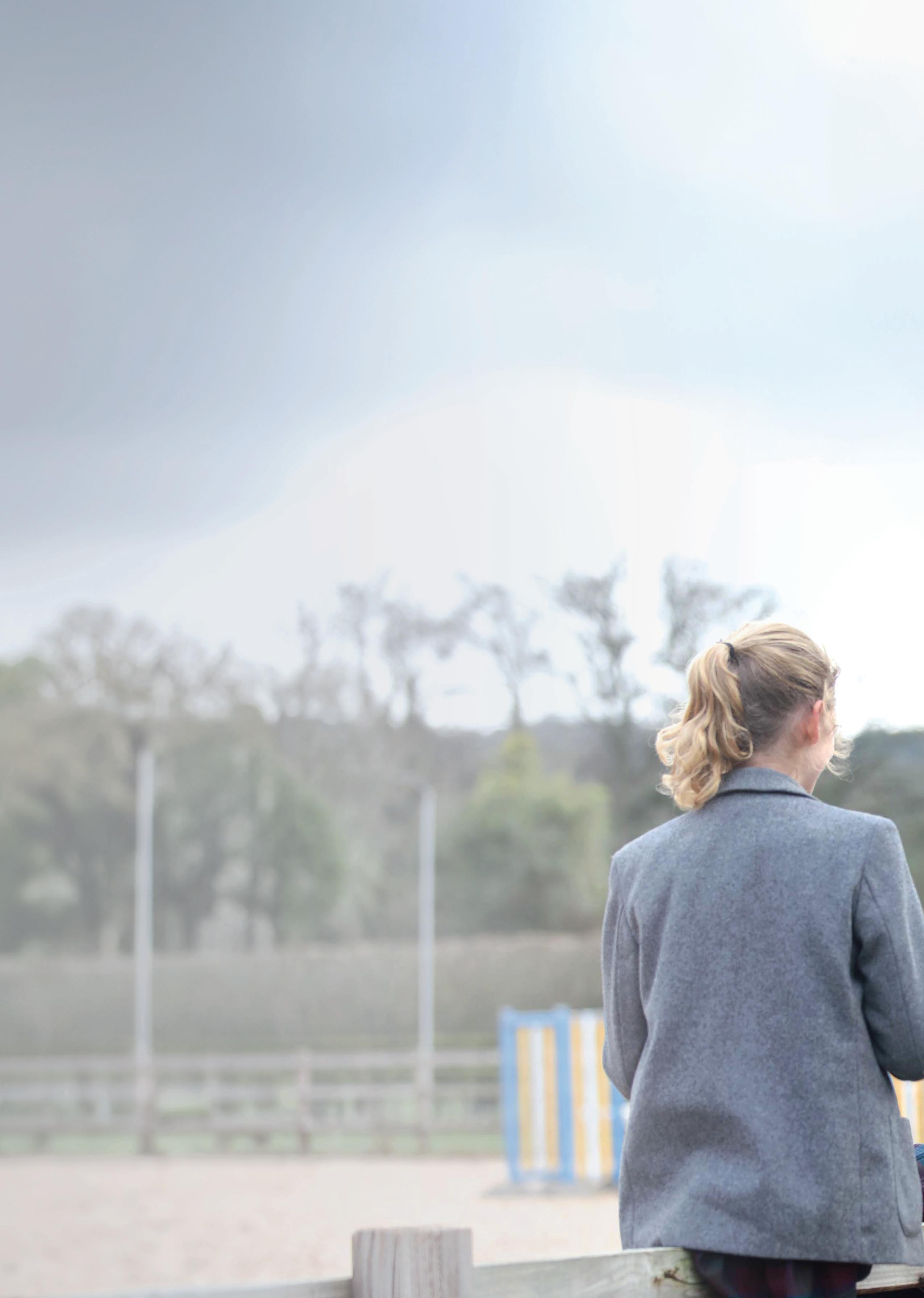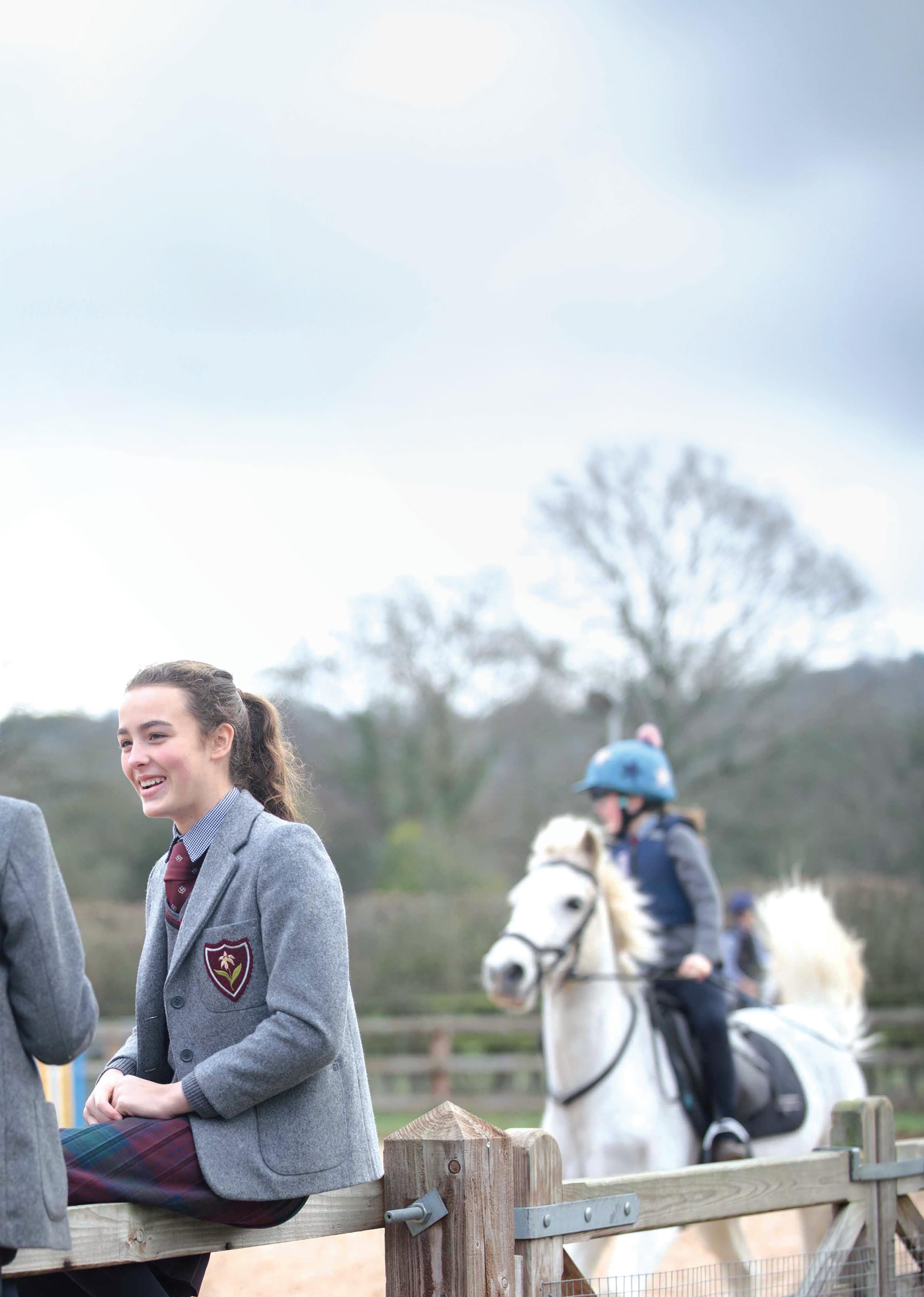

Schooling success
Combining school and riding can be tricky, but horses can benefit a child’s education. LottieMorgan uncovers some options for horse-loving pupils
WHETHER you have a four-year-old just learning to ride, or a teenager competing internationally, there is an increasing range of options when it comes to schools for the horse-mad student. From those with state-of-the-art facilities and a bring-your-own-horse model, to state schools that support competitive equestrian teams, there is growing recognition that access to horses can enrich children’s education.
“Our equine centre has grown exponentially in the past six years,” says Sophie Starr, director of riding and equestrian centre manager at Bryanston School in Dorset, which has stables in both the preparatory and senior school.
While the senior school offers yearround livery, the prep school operates like a riding school.
“It’s a fantastic way for children to get a rounded start in horses. It’s great to have competitive riders, but we want our students to learn the fundamentals of equine welfare and riding,” says Sophie. “Being outside in nature and having access to the animals also has an important emotional monitoring function. The children learn to be responsible for something other than themselves, and spending time at the yard provides huge benefits for their mental health.
Staff at The Elms School, a prep school in Herefordshire that has a stables and working farm on-site, notice similar benefits. “The ponies here are a wonderful pastoral tool,” explains Aurora Mercer, head of admissions and marketing.
“Children find it easier to open up about an issue if talking about it while mucking out or grooming ponies.”
At The Elms School, beginners start riding lessons from the age of eight.
“Some little pre-prep children are already winning armfuls of rosettes at competitions, but it’s more important for us that the children are hands-on and learn good stable management,” says Aurora.
For competitive riders, balancing a
training and competition schedule with academic study can be a huge challenge. Having horses on-site at school, with riding integrated into the curriculum, can be an effective way to manage the demands on their time.
At Bryanston’s senior school, 95% of the 60 horses are owned by the students.
“Children who bring their own horses can ride as part of their timetabled sport lessons, and we have coaches that specialise in different disciplines,” explains Sophie. “Each child is also paired with a tutor, who works closely with them to maintain a balance between their equestrian activities and their school work.”
Some schools with dedicated equestrian centres also offer students the opportunity to complete equine qualifications. Katie Bougeard recently completed her BTEC in equine studies, alongside A levels in psychology and photography, at Stonar, a leading equestrian school in Wiltshire.
“At most schools, you have to have your own horse in order to complete the BTEC, but at Stonar I was able to use the school horses for the assignment work, which was brilliant,” explains Katie. “I also completed my BHS Ride Safe and level one qualification. It was so interesting, and I’ve learnt such a lot.”
Katie will continue her equestrian studies at Oxford Brookes University, studying equine science.
“I wasn’t sure what path to take after school, but my equine teacher encouraged me to explore lots of different options. I was also able to chat to lots of people on the yard to help me decide what to do,” she says.
WHILE an equestrian school seems like the ultimate dream for many, plenty of horse-mad students thrive in schools that don’t have dedicated facilities. Annabella Pidgley, who won three individual gold medals in the young rider European Dressage Championships in 2023, left Wellington College in the same year, having achieved top results in her International
Baccalaureate. The school is also home to students competing at a high level in showjumping, eventing and polo.
“Sport is taken very seriously here, and we want our students to pursue their chosen sport to the highest level they can,” explains deputy director of admissions Tim Head. “We’re very flexible with regards to students being able to maintain their training and competition regime. Academic work comes first of course, but students get enormous support from their housemaster and tutors, who understand
the pressures they are under and help them manage the juggle.”
Success in competition isn’t confined to independent schools. Jill Barker is chairman of the National Schools Equestrian Association (NSEA), which has been providing inter-school competitions since 1991 and runs three major championships per year.
“Fifty percent of the riders that compete with us are from state schools,” she says. “In fact, state schools have won the national championships the past few years: Lady Manners School won the combined training last year, while St Mary’s School, Melrose, won our arena eventing.
“One size doesn’t fit all, and each school manages it differently. Some NSEA teams have support from the school, others are managed by an enthusiastic parent and fundraise in order to take part in competitions. We have three pupils from a primary school in Scotland who came to the NSEA Grassroots Championship at Hickstead in August – they raised over £1,000 to cover the costs of travelling.”
AWAY from NSEA competitions, some state schools offer students the chance to integrate riding into GCSE or A-level PE.

“I think, overall, teachers have recognised that children with a passion for equestrianism are driven and motivated to follow their dreams,” says Jill. “If they can tap into that, it helps to motivate them in all other aspects of school life.”
That ethos is certainly true for Xanthe Barker who, after a long break from mainstream education, attends Minerva’s Virtual Academy (MVA), an exclusively online school that delivers education through a mix of live timetabled lessons, recordings, assignments and oneto-one mentoring.
“I do all my schoolwork at the yard, so in between lessons I’ll go out, ride or work,” says Xanthe.
“If I have a riding lesson or competition, I can choose to catch up later on by watching the recording. Doing stuff I enjoy makes me work that much harder at school. For various reasons, I struggled at mainstream school, but now I absolutely love learning again and am doing so much better.”
Thirteen-year-old William Eustace also attends MVA, and is one of 100 elite young sportspeople who have joined the school in the past two years. With only two to three hours of live lessons per day, he has the freedom to train whenever he can.
“The programme is structured, but gives you a lot of flexibility,” explains his mother, Charlotte. “If I look back to previous years, as soon as the clocks changed and it was dark, it was game over. Now, William can ride during the school day, and see brilliant trainers who might be busy on the weekends. It’s been fantastic, and we are getting some great results – in his riding and his education.”
THERE is no doubt that supporting children to pursue their equestrian dreams – whether that’s securing equine qualifications, competing at a high level, or simply spending time with these beautiful animals – needn’t come at the expense of their education.
On the contrary, with the right support, it can help their emotional development and also boost their academic achievements.
“There’s a reason children talk about a horse being their best friend,” says Bryanston’s Sophie Starr. “Spending time with these wonderful animals gives children a taste of responsibility, builds their self esteem and teaches them how to manage their emotions. These are valuable life lessons that just can’t be learnt in the classroom.” H&H
